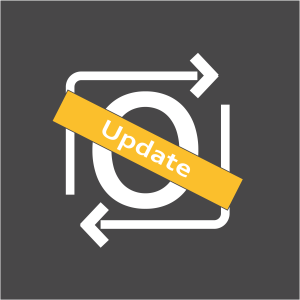Smart camera for cloud applications
From bridge solutions to cloud-based smart cameras
Smart cameras have now established themselves as stand-alone systems in various use cases for evaluating production parts. Due to their compact, high-performance design, such cameras offer a particular advantage in areas where no additional computers or their peripherals can be installed. The disadvantage is that the cameras are usually only designed for one area of application and must be constantly adapted to the changing production process. Therefore, the lifetime of smart cameras in these areas often does not meet user expectations. The need for adaptable, intelligent systems that can be maintained despite possible changes and expansions in production lines and that can grow with technical innovations is becoming apparent.
Bridge technology to cloud computing
For this reason, the solution trend is emerging for smart camera systems to be increasingly controlled via AI applications and cloud computing. This mixes the advantages of both systems. On the one hand, the smart cameras themselves offer extensive image pre-processing capabilities, with the scalable performance power of external computing units in particular providing an optimized solution to the increasing demand for difficult verification methods. At the same time, this provides the opportunity to better synchronize the systems as a whole with the plant. Many users are currently looking for a bridge technology, which means that they would like to solve their tasks with a smart camera for the time being, but still be prepared for a later switch to cloud computing. Ideally, no new hardware should be required for this and the camera should only be adapted to the new environment through software updates. This means that little money can be spent on peripherals and infrastructure and yet a long-lasting concept can be integrated.
evoVIU as a cloud-based smart camera
The evoVIU smart camera can meet both requirements, as it can be used as a standalone smart camera as well as a cloud-based smart camera. And without any necessary adjustments to the existing hardware conditions. This offers users obvious advantages. The evoVIU can be integrated quickly, requiring only a power supply and an Ethernet line. After that, the camera can be adjusted directly on site and without installing additional software for individual circumstances via all end devices.
When using the smart camera without cloud-based solutions, Machine Visioncan be performed directly on the camera and sent to defined endpoints. If the evoVIU smart camera is to be controlled via the cloud, commands for controlling and regulating image acquisition can be provided via an encrypted http REST interface.

Workflow of the evoVIU for cloud-based use
After successful installation of the evoVIU, the optimal setting of the desired image follows. Once these two points are done, the UUID uniquely created during this process can be saved and passed to the AI programmer. This writes the code to evaluate the captured part, saves the image and thus optimizes the training set. When production and acquisition start, the image source is created and activated on the evoVIU. After a trigger input, the image is captured and processed. The processed image is evaluated, classified as ok or not ok and stored for further reference and optimization of the training set.
Other contributions:

Release Update V5.4.0
The release update V5.4.0 is here! A major dashboard update, minor bug fixes and the integration of persistent variables are included.

Finally: The new VIU2 PoE camera is here!
The VIU2 PoE camera is here! You can find out why PoE is an important feature in this article.

Finally: The new VIU2 PoE camera is here!
The VIU2 PoE camera is here! You can find out why PoE is an important feature in this article.

Release Update V5.4.0
The release update V5.4.0 is here! A major dashboard update, minor bug fixes and the integration of persistent variables are included.

5 real-life smart city examples
What smart city examples are there? You can find out in this blog article.

Object recognition with Machine Vision
Object detection is an important way for many industries to sort out faulty components.

